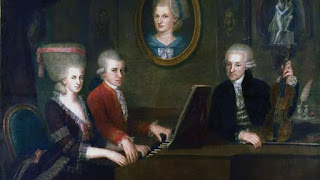Holburn
‘Toteham’ (the farmstead of a man called Totta) was first recorded in Domesday Book, as was a weir at present-day Tottenham Hale.
From the twelfth century Tottenham’s accessibility to London attracted wealthy merchants and religious institutions to its wooded slopes, although the main village consisted only of a cluster of dwellings at Tottenham Green. Six inns were recorded on the High Road in the mid-15th century and Tottenham manor house (now Bruce Castle) lay almost a mile to the north of the green.
Henry VIII made a payment to the hermit of Tottenham when he visited the house in 1517. Over the course of the next two centuries mansions, private schools, groups of almshouses and other charitable institutions were built near the High Road, while extensive woodland survived to the west and the marshy meadows lay undisturbed to the east.
Only in the late 18th century did development begin to branch away from the High Road along old tracks like White Hart Lane and new roads like Bruce Grove.
Tottenham remained suburban rather than urban until the coming of the railways to the east side of the parish in the 1840s and the west side in the 1850s. Wood Green, formerly an outlying hamlet, grew especially rapidly and had established itself as a separate middle-class district by the early 1870s. At this time a railway at last cut through central Tottenham, west of the High Road. Speculative developers had already built numerous houses in anticipation of this event and they stepped up their efforts over the following two decades, until Tottenham had spread to meet its neighbours in all directions.
In the early 20th century places of entertainment were built on the High Road, Tottenham Hotspur football club won early trophies and industry came to the marshes. Shown in the photo below, an engine house survives on Tottenham Marshes, with a recently opened café. The last pockets of farmland disappeared in the 1920s, when municipal housebuilding began in earnest.
Hidden London: Tottenham Marshes engine house by Robert Lamb
After the Second World War council flats dominated the construction programme, with massive projects in the 1960s – notably at Northumberland Park and Broadwater Farm – and smaller, low-rise estates in the 1970s, for example at Seven Sisters. This was a period of significant change in Tottenham’s residential profile, with the arrival of immigrants first from the Caribbean, especially in South Tottenham, and later from Turkey and Africa.
On 4 August 2011 police shot and killed Mark Duggan, a Broadwater Farm resident who was subsequently alleged – but not proven – to have been involved in drug dealing and gang-related criminal activity. Two days after Duggan’s death, a protest march from Broadwater Farm to Tottenham police station escalated into a night of rioting and arson across much of the area, which was then followed by similar events in other parts of London and beyond. Several buildings in Tottenham were damaged beyond repair and had to be demolished.
A section of the northern part of Tottenham High Road and its vicinity has recently been transformed by the Northumberland Development Project: the construction of a new stadium for Tottenham Hotspur FC. Regeneration of the surrounding area will continue for some while yet, and may ultimately result in the cityscape shown in the aerial CGI at the top of this article.
Postal district: N17

Comments